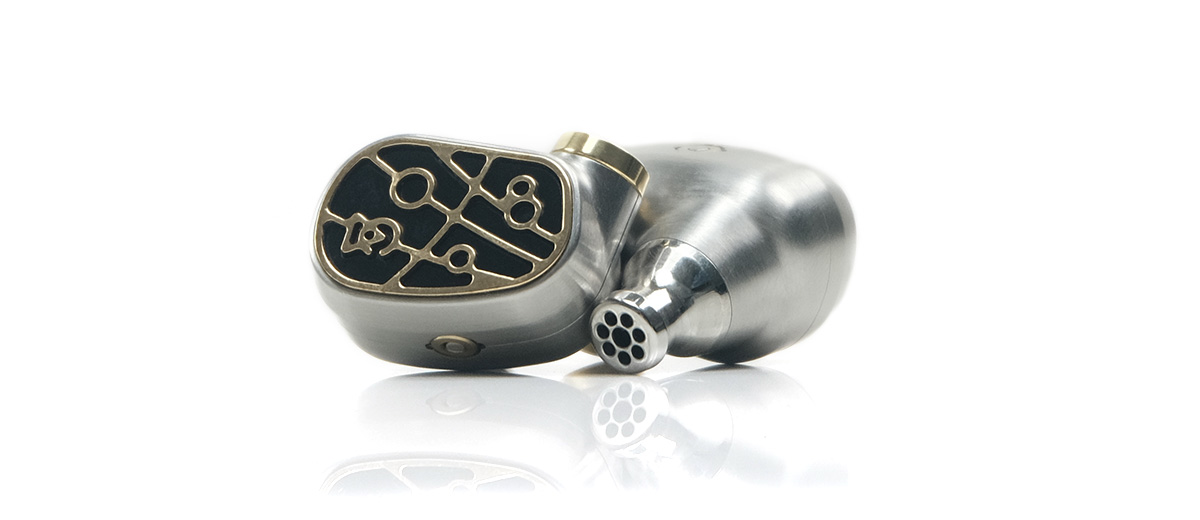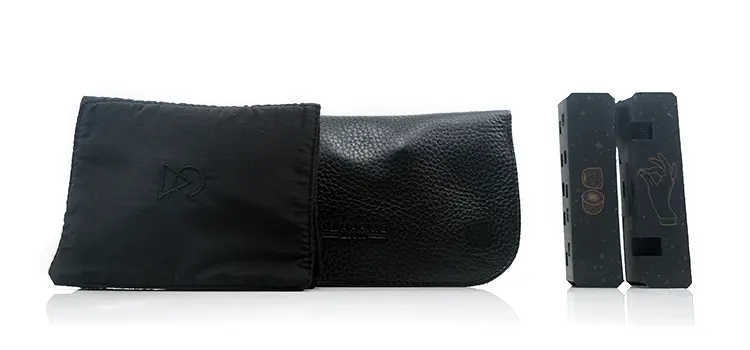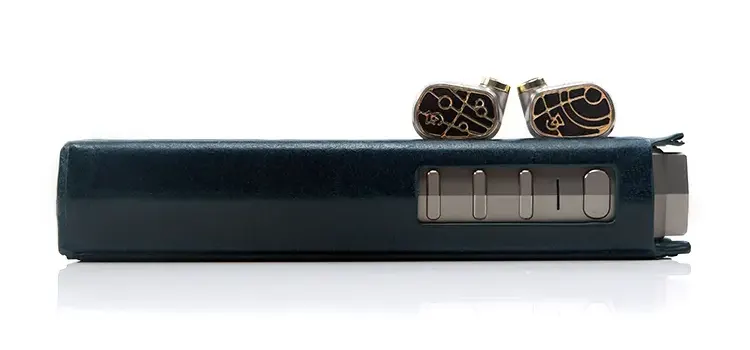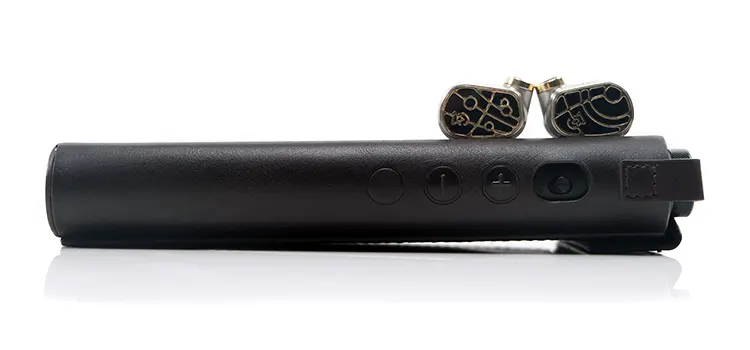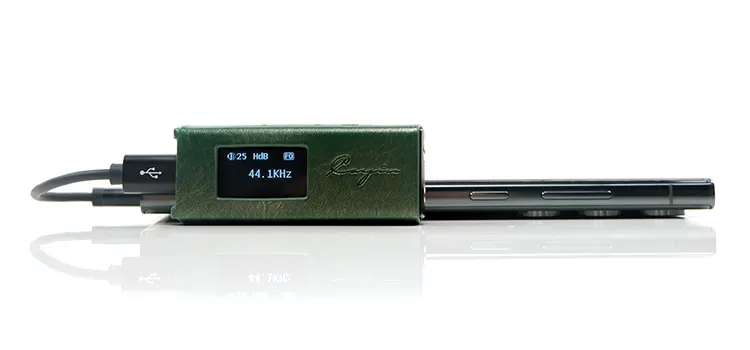Sound Impressions
The following impressions were completed using the HiBy RS8 and the Cayin N7 as our main sources. The Solaris Stellar Horizon was fitted with a mix of stock foam tips and some 3rd party Final E tips for comparison purposes.
Summary
The Campfire Audio Solaris Stellar Horizon is a completely different proposition from what has come before. It is almost like a brand-new IEM with very little in common with either the 2020 or the original.
Technically, Solaris Stellar Horizon is on a whole different level to the previous models with a much-improved soundstage performance, additional headroom, and generally a more coherent presentation.
If you are coming from the OG Solaris, the openness of the mids and the wider staging quality is perhaps the most striking difference. These new drivers and acoustical chamber designs really cast out a very wide stereo field in keeping with what a lot of flagship monitors seem to be going for these last 12 months.
Coming a close second is the timbral changeups, with a tonal quality that has an improved realism in its harmonic balance. It is a more neutral coloration and not as exaggerated in the lows or pinna gain compared to what came before.
There is a slightly forward treble lilt to this version that generates a generally lighter touch to notes but it is tastefully done without any harshness or distracting narrow band peaks creating any unnatural-sounding percussion tones.
One more subtle observation is the slight drop in efficiency compared to the previous generation. Not by a huge amount but if you know the original Solaris you will remember just how sensitive it was.
The new drivers seemed to have dropped the SPL by around 3 mVrms from the 2020 version which I personally welcome. For those who want to use outputs with slightly higher noise floors, it should be more ‘hiss resistant’ though still an easy IEM to drive.
Frequency Response
It seems less is more with the Solaris Stellar Horizon frequency response. The areas of emphasis are more or less the same as before but Campfire Audio has gone for more of a gentle rise and fall in those specific areas and not as exaggerated as the previous version’s response curves.
I think the standout for me is the midrange around 1-2k which is actually less pushed and intimate compared to the older models. Imaging, especially for vocals, is generally more neutral in terms of positioning and mix a bit more with surrounding instruments which does help create an improved perception of distance and staging size.
As before the Solaris Stellar Horizon bass is lifted but the emphasis is shifted more to a subtle sub-bass emphasis as opposed to an elevated mid-to-upper bass curve. It’s a more controlled neutral response with stronger bass-to-mids separation courtesy of a flatter 200Hz to 800Hz range.
That flatness will strip a little of the ‘beef’ or warmth from the lower mids but I find that improves note separation and perceived articulation which in turn helps with mid-presence and spacing.
There is a minor 2-4k dip, but it’s fine, nothing as excessive as the 2020 edition, and certainly nothing that would seem to strip the energy and air out of the Solaris Stellar Horizon’s upper-mid presence.
From 4-10k the treble is lifted but once again it is relatively even-handed in that lift with no region overly amplified to create any nasty harmonic dissonance. It has more of an ethereal light touch quality to its performance with excellent extension, much more so than the Solaris 2020.
Timbre
Generally neutral to nature, and closer to accurate with an ethereal quality in the highs. The previous Solaris versions are both warmer and heavier on the lows with the SE version sounding relatively darker on the highs and in the case of the 2020, warmer throughout.
The particular tips you use will affect the precise makeup of the Solaris Stellar Horizon’s timbre switching from smoother to cleaner or more dynamic depending on the choice.
I do find myself biasing to the foam tips if we are going for the supplied stock versions. You get a warmer tone and a slightly more saturated treble performance that gives the monitor some additional flexibility for percussion-intensive rock.
My only critique of the foam tips was the feeling the performance was a little ‘distant’ and lacking in dynamics with that generally softer coloration. I do wonder also if the spout is being pushed a little further away from the second bend of my ear canal producing that slightly diminished presence.
The marshmallow tips did a lot better than I normally expect them to do with a more vibrant and open midrange but the lack of bass presence relative to the cleaner treble tone stripped a bit of necessary weight to the Solaris Stellar Horizon’s fundamental making it less appealing for me with EDM and R’n’B.
I did find a healthy compromise with Final E tips, CA’s former preferred 3rd party tip. These tips strengthened the bass fundamental beautifully but kept the open and clean midrange vibrancy from the marshmallow tips.
Treble will bite a little more than the foams but you can counter that with warmer or more analog-sounding sources such as the Cayin N7 and the HiBy RS8.
Staging & Dynamics
Probably the most impressive aspect of the Solaris Stellar Horizon is just how open it sounds compared to its predecessors. Not just open but also coherent and evenly balanced throughout.
It was a clever move to drop back the 1-3k region and give it a more neutral position. It does help give you a much stronger perception of distance as well as allow for background and surrounding instruments to come through more clearly.
That cleaner treble performance also adds a touch more definition and sparkle to higher-pitching spatial cues making micro-detail very easy to pick out now. The headroom and width are really so much more convincing than the OG Solaris which sounds comparatively ‘walled-in’ and much narrower.
The lows are not as fulsome or as elevated as before so you will get a sense of a slightly shallower performance but in actual fact, the sub-bass extension is just as good and at times a little bit better for me when called upon as it sounds ‘less disguised’.
That flatter lower-mids creates some necessary separation so you can pick up the bass layering a lot better now. Still, it’s not the most powerful set of lows out there on the market. It’s a moderate tuning with a decent fundamental but not overwhelming.
Synergy
Efficiency
The Campfire Audio Solaris Stellar Horizon has a very easy load of 4.4Ω and a 9.145 mVrms rating in order to obtain a 94 dB SPL @ 1kHz. You should have no issues driving this from both a dongle and a DAP without having to up the gain levels.
However, compared to the Solaris 2020 edition’s 6.54 mVrms rating, you can see at least on paper that the newer design is less sensitive. I suspect the new dual-diaphragm armature drivers are one contributing factor to that higher mVrms rating.
The Solaris editions have always been very efficient IEMs, however, in our testing with a few DAPs such as the HiBy RS8 and the FiiO M15s, the Solaris Stellar Horizon seems to be the least sensitive version thus far.
That should give it a small advantage over the previous generations with higher noise floors from older DAPs such as the HiBy R8, (balanced).
DAP Pairings
For this section I tested 4 DAPs; the Fiio M15s, both the Cayin N8ii and the N7, as well as the HiBy RS8. All four DAPs I would classify as natural sounding with the M15s possibly the warmest with its second harmonic option turned on.
If you are a little more treble-shy or want something that teases out a more liquid and richer tone from the Solaris Stellar Horizon then the M15s is a good choice.
However, it does sound the most intimate of the four with less separation and headroom which I think is a strong area for the Horizon. This one is purely a tonal synergy with some lovely rich vocal performances.
The Cayin N8ii will create a more complex sound than the M15s, one which gives vocals a lot more room to shine with a slightly sweeter tone and more treble sparkle. I would pick this over the M15s if I wanted vocals to be the focus on the Solaris Stellar Horizon but not at the expense of headroom.
Both the RS8 and the N7 have the more neutral imaging with the RS8 the more detailed. However, the N7 played really well to the excellent staging capability of the Horizon with a spacious performance and excellent width.
Bass is relatively dense sounding also with the N7, not too lean but still quite controlled it’s delivery with mids timbre not catching too much treble overtone either.
The RS8 has a more accurate harmonic balance of the two. It does sound more resolving and revealing through the mids and highs compared to the N7. Without the Turbo mode, the bass from the Solaris Stellar Horizon is a bit flat so I would keep that on to give the entire performance a bit of a welcome lift.
Dongle Pairings
I tested four dongles with the Solaris Stellar Horizon. These included both the Cayin RU7 and the RU6, as well as the HiBy FC6 and the Questyle M15.
Of these four, the RU7 has the best balance with the other three shifting the emphasis a bit more to one end of the Solaris Stellar Horizon presentation or the other. Of the four, the RU7 also sounded the most open and the one that could really take advantage of the large staging quality of the Horizon.
The timbral match was excellent with that analog thickness balancing out the cleaner mids and highs of the Solaris Stellar Horizon without diminishing any of the well-defined levels of detail.
The RU6 pushes the Horizon mids further forward. It’s a beautiful, lush tone and one that works really well with those mids BA drivers but it doesn’t quite convey the same expansive staging and is not quite as firm on the lows as the RU7/Horizon combo.
The FC6 will produce a thicker bass tone and of the four it will produce the fullest bass to lower-mids response and a denser midrange tonal quality. It’s very analog in its tone with the Solaris Stellar Horizon but does not quite have the strongest level of headroom and openness with a more intimate vocal performance.
Of the four, only the M15 sounded ill at ease with the tonal synergy. It’s a snappy performer, with good bass dynamics but the soundstage felt narrower with a stronger treble emphasis compared to the other three.
The mids timbre here also felt a little too clinical for my tastes and if you listen carefully, you might pick up on a higher noise floor compared to the RU7.

